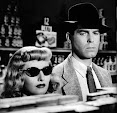Now, the illustration breaks down the pre-WW2 map of Germany into electorates. The redder the electorate the more support the Nazi's had in it. Green areas are areas where Nazi's were unable to win seats. Now the taller the individual electorate, the higher the proportion of Catholics in it. Flatter areas are Protestant dominant.
Now, it's pretty obvious that Catholic areas tended to vote strongly against Hitler, whilst the Protestants tended to vote for him. Note, this does not mean all Protestants voted for him,[paging Wilhelm Ropke] just the majority of them. Likewise, the majority of Catholics voted against Hitler; not all of them.



5 comments:
And many if not most of the Protestants, by then, were not the more orthodox kind that their forefathers had been, but more mainline, liberal; Germany had been at the forefront of Protestantism's devolution, what with liberal modernism having been entrenched in the seminaries since the mid-late 19th century; I presume you've heard of Friedrich Schleiermacher, and the impact he had had... And Walter Rauschenbusch brought the liberalism he had picked up in Germany, back to America, greatly impacting the denominations we call mainline Protestantism, today...
So, yes, it was much more Protestants who sadly embraced National Socialism, than Catholics, to a much greater degree. But, many of them were liberal Protestants, far removed from the ways of thinking of their forefathers, who were far more like Roman Catholics, in their ways.
So Nazism is Lutheranism, just as progressivism is Puritanism and Quakerism.
The Lutherans hated Jews, and the Puritans hated Christmas and men having sex with women.
Denazification was a continuation of the holy wars of the seventeenth century, wherein all the Lutherans aka Nazis pretend to convert to puritanism aka progressivism.
Not to pick nits too much, but when you say "Note, this does not mean all Protestants voted for him, just the majority of them.", I think it's important to remember that in the July 1932 election (which was the high water mark electorally for the Nazis), the Nazis only received 37% of the vote and the Catholic Center Party received 11%.
Since Catholics made up roughly 40% of the electorate at the time, and at most only about a quarter of them voted for the Catholic party, I think it's quite unlikely that the "majority" of Protestants voted for the Nazis.
"that in the July 1932 election (which was the high water mark electorally for the Nazis), the Nazis only received 37% of the vote"
Vote splitting. Everyone else sounded remarkably like the Nazis. Most people voted for Nazis, commies, or a party that was fairly similar to Nazism.
Well, vote splitting is pretty much my point. The top three finishers in July 1932 were the Nazis, the Social Democrats, and the Communists - all leftist/socialist/authoritarian parties.
The Catholic Center party came in fourth with 11%. So, assuming *only* Catholics voted for the Center Party (unlikely), that still means 3/4 of Catholics voted for one of the various socialist parties.
Also, remember that the the NSDAP was founded in, and grew to initial prominence, in Bavaria, which is majority (if not completely) Catholic.
I just think the argument that somehow the Nazis were a phenomenon of Protestantism and the Catholics were innocent of their rise to power is a highly questionable proposition.
Post a Comment